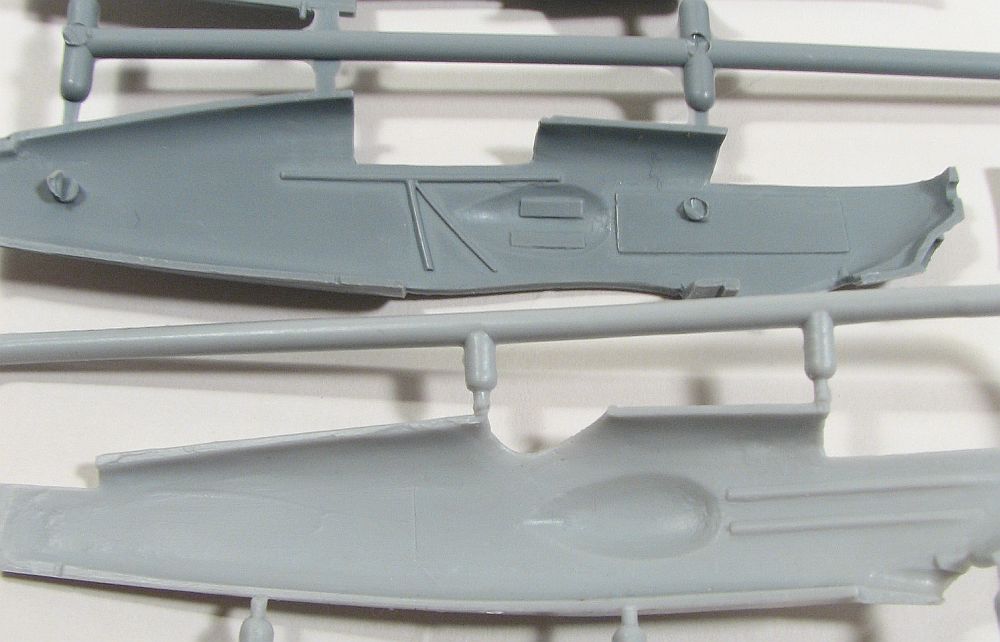
HR Model 1/72 Avia B-534/II
By Matt Bittner
The Kit
The HR Model 1/72 Avia B-534/II has 50 pieces of gray, injected plastic, some parts not being used (since most sprue are common between all of HR Model's B-534s). There is also a photoetch set with 24 pieces on the fret and a clear film that consists of an instrument sheet for the photoetch instrument panel, and windscreens. Since this release is for the Greek machines, there are decals to build both B-534/IIs that were delivered to the Royal Hellenic Air Force in 1936. These can be painted in either khaki over aluminum, dark green and sand over light blue, or overall dark green. Although there are no photographic evidence left of these Greek B-534s, from textual accounts decals exist to finish the B-534 in all possible variants.The initial steps of construction are putting the cockpit together. Since most of this is photoetch care must be taken. First the seat – and belts – are glued together and painted. The instructions also point out the various colors on the photoetch pieces so pay close attention. Once the floor is painted then you add the control column (which consists of photoetch and plastic) and rudder pedals. To this is added the sidewalls and two rods that are cut from the supplied piece of separate plastic rod. Note that since this is the II series, you leave the headrest off, photoetch part 15. It's meant for the later versions with the full canopy. In the next step, you add the built-up instrument panel (photoetch and clear film) and the built-up seat. The last step before major construction is building the underside radiator. It is built with plastic and photoetch pieces, making for a pretty accurate looking radiator.
Now major construction can commence. First, ignore step 5 because it's for the later versions of the B-534 with the enclosed canopy. Step 6 is where you glue the built-up cockpit into one fuselage half along with the nose scoop. At this point the fuselage halves can be assembled. While the instructions have you add gun barrels to the fuselage sides, I would leave them off until the end. That way you're not trying to paint them at the end, after all major construction.The rest of the major parts are now added. Lower wings, vertical and horizontal tail surfaces, radiator built-up in step four, separate upper, forward fuselage. You'll want to leave off the struts, prop and windscreen until the end, though. This includes the final step which is adding all struts, including landing gear, and upper wing. All that is best left until the end.
Comparing with RS Models B-534/5
Naturally people are going to wonder how the HR Model Avia compares with the RS Models one. To be honest, I can't give a nod to one over the other. Both have their highlights – and both have their faults. In addition, you need to keep in mind I'm comparing the later model RS B-534 (the 5, in this case) with the earlier HR (II). Right there are differences with the fuselage and upper wing. Even so, there are enough similarities that a comparison can be made. (Note the HR kit is the lighter model in the accompanying photos.)HR Model
- Advantages
- Complete cockpit, being provided by the photoetch
- Flying surfaces are more too scale (trailing edges are nice and thin)
- One-piece horizontal tail
- Disadvantages
- Struts don't show the finesse the RS kit does
RS Models
- Advantages
- One-piece lower wing (helps with alignment)
- Struts show more finesse
- Plastic a little "crisper"
- Disadvantages
- Lack of cockpit details (although if you bought the separate Brengun photoetch it would definitely make up for it – but it is separate)
- Trailing edges not as thin as could be
Maybe overall I could give the nod to HR. It does have a more complete cockpit out-of-the-box and the flying surfaces are really nicely done.
Conclusion
I do really like the HR Model Avia B-534/II and am looking forward to starting it. As the Avias are the first foray into injected plastic for HR Model they have done a fantastic job. Definitely recommended.
I definitely would like to thank HR Model for supplying the Avia B-534/II for review.








